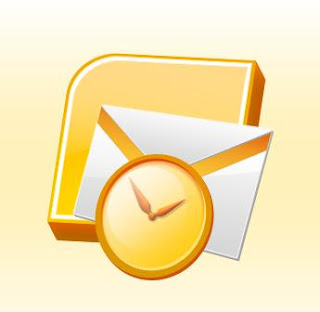How to increase your productivity using DS Development Outlook add-ins
Bells & Whistles for Outlook
Easy Mail Merge
Auto Reply Manager
Auto Follow Up
SilentMail for Outlook
All our Outlook add-ins are designed for Outlook productivity targets: no matter how you are using Outlook, we are sure one or more of our Outlook add-ins can easily match your needs, helping you to compose and manage emails faster and better.
The concept of the DS Development Outlook add-ins relays on the following real-live, common situations:
when composing emails, we all deal with repetitive blocks of email text, even if it's a greeting line, a business proposition, a set of help instructions or a simple email signature;
for various occasions, everyone has to send the same email to several people, like a business newsletter or a Christmas email;
we all have holidays: using an email autoresponder for such periods will help you stay away from your computer for a while;
upgrading your computer is likely to happen once in a while, so you need a way to migrate your contacts to the new Windows installation.
To meet such common demands, we developed a range of Outlook add-ins. Our add-ins concept is simple: make Outlook work harder for you!
Below you can find a set of links to other DS Development pages, detailing how to use each of our Outlook add-ins for common tasks. If you wish to suggest us new ideas for Outlook add-ins, you are welcome to contact us.
 Our Outlook Add-ins
Our Outlook Add-ins
Bells & Whistles for OutlookEasy Mail Merge
Auto Reply Manager
Auto Follow Up
SilentMail for Outlook
DS Development Outlook add-ins - concept
All our Outlook add-ins are designed for Outlook productivity targets: no matter how you are using Outlook, we are sure one or more of our Outlook add-ins can easily match your needs, helping you to compose and manage emails faster and better. The concept of the DS Development Outlook add-ins relays on the following real-live, common situations:
when composing emails, we all deal with repetitive blocks of email text, even if it's a greeting line, a business proposition, a set of help instructions or a simple email signature;
for various occasions, everyone has to send the same email to several people, like a business newsletter or a Christmas email;
we all have holidays: using an email autoresponder for such periods will help you stay away from your computer for a while;
upgrading your computer is likely to happen once in a while, so you need a way to migrate your contacts to the new Windows installation.
To meet such common demands, we developed a range of Outlook add-ins. Our add-ins concept is simple: make Outlook work harder for you!
Outlook add-ins - practical functionality examples
Below you can find a set of links to other DS Development pages, detailing how to use each of our Outlook add-ins for common tasks. If you wish to suggest us new ideas for Outlook add-ins, you are welcome to contact us.
how to send automatic emails with our Outlook autoresponder add-in;
how to create and send a personalised Outlook newsletter;
how to create and send a personalised Outlook newsletter;
how to automatically insert greetings when replying to Outlook email messages;
how to mass extract email addresses from Outlook emails;
how to predefine and use Outlook email templates when composing Outlook messages;
how to automatically forward or redirect an incoming Outlook email;
how to manage Outlook add-ins.
Here is a list of links pointing you to 3rd party web sites were you are likely to find information related to Outlook add-ins and Outlook troubleshooting:
Slipstick Systems - utilities, add-ins, how to's and other solutions for Microsoft Outlook and Microsoft Exchange;
HowTo-Outlook - provides help and news for Microsoft Office Outlook and Microsoft Outlook related add-ins;
Microsoft Office Marketplace - find third-party products and services on the Office Marketplace that complement Office, such as add-ins, templates, live support and more;
Office Zealot - home of the Microsoft Office system enthusiasts.
All our Outlook add-ins support Microsoft Office Outlook 2007 and Microsoft Windows Vista (32/64). For add-in management purposes, we offer you for free the Outlook Add-ins utility: using this program, you can easily manage all your Outlook add-ins (enable/disable). This Outlook add-ins utility is installed as part of the Bells & Whistles add-in installation: if you choose to uninstall Bells & Whistles, you have the option to keep the add-ins utility for free.
how to predefine and use Outlook email templates when composing Outlook messages;
how to automatically forward or redirect an incoming Outlook email;
how to manage Outlook add-ins.
Other resources for Outlook add-ins
Here is a list of links pointing you to 3rd party web sites were you are likely to find information related to Outlook add-ins and Outlook troubleshooting:Slipstick Systems - utilities, add-ins, how to's and other solutions for Microsoft Outlook and Microsoft Exchange;
HowTo-Outlook - provides help and news for Microsoft Office Outlook and Microsoft Outlook related add-ins;
Microsoft Office Marketplace - find third-party products and services on the Office Marketplace that complement Office, such as add-ins, templates, live support and more;
Office Zealot - home of the Microsoft Office system enthusiasts.
All our Outlook add-ins support Microsoft Office Outlook 2007 and Microsoft Windows Vista (32/64). For add-in management purposes, we offer you for free the Outlook Add-ins utility: using this program, you can easily manage all your Outlook add-ins (enable/disable). This Outlook add-ins utility is installed as part of the Bells & Whistles add-in installation: if you choose to uninstall Bells & Whistles, you have the option to keep the add-ins utility for free.













